What’s the quickest way to boost conversions from your email marketing? Most marketers will tell you it’s about writing the perfect email. But is that it? The truth is, it’s only the start.
A great email alone isn’t enough. It would be best to have the strategy behind it: segmentation, personalization, compelling CTAs, and timing.
In this post, we’ll discuss the exact tactics that eCommerce stores use to convert more customers, from targeting the right audience to setting up automated email sequences.
Whether you’re just starting out or looking to improve your existing campaigns, you’ll learn how to make email your top revenue driver.
What are email conversion rates in eCommerce?
So, what exactly is an email conversion rate? Let’s get to it. A conversion is when someone takes the action you want—buys, clicks a link or signs up to an event. But how do you know if your conversion rate is good? The average email conversion rate in eCommerce is around 8%.
Here’s the thing: most brands don’t even get close to that. You’re stuck at 2-3% and wondering why. Here’s the secret—this is often because they aren’t optimizing their emails fully.
It’s not just about the content of the email itself, but also who you’re sending it to, when you’re sending it and how personalized it is. If you want to increase conversions, you need to know where you’re at now. So track your current metrics: what’s your open rate? How many click-throughs are you getting? Most importantly, how many are converting?.
What if your conversion rate is below average? That’s not a problem. That’s a sign you need to optimize. The strategies we’ll go through next will help you close that gap and increase your conversion rate. So, sit back and get ready to see how segmentation, personalization and other tactics can bring in those extra sales.
Segmentation: Targeted Messaging
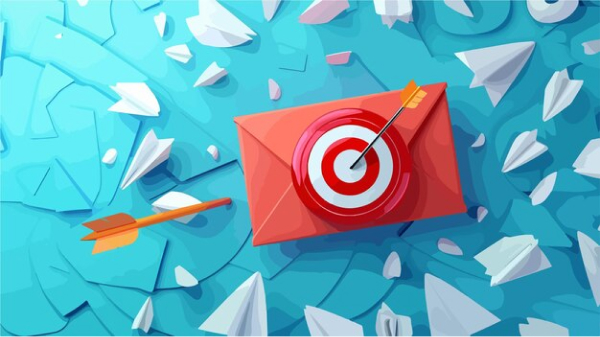
Why do some emails feel like they’re talking directly to you, and others feel like they’re for… someone else entirely? The answer is segmentation. It’s not just about sending out an email and hoping for the best. If you want to increase conversions, you need to send the right message to the right people.
Imagine this: You own a clothing store. One customer has just bought a summer dress, another has added a winter coat to their cart but didn’t check out. Would you send both customers the same promotional email? Of course not! The first customer probably wants an offer on summer accessories, the second needs a reminder to complete their purchase. That’s segmentation in action.
Segmentation involves dividing your email list into smaller groups based on specific factors like past purchases, engagement level, location or even browsing behavior. And it’s not just a good idea—it’s a proven strategy. Businesses that segment their lists see up to a 40% increase in open rates and 20% lift in conversions.
But don’t stop there! The more granular your segments the more personalized you can make your emails. Here’s what you can do:
Demographic Segmentation: Send different emails based on age, gender or location.
Behavioral Segmentation: Group customers by what they’ve done on your site—whether they’ve browsed, purchased or abandoned their cart.
Engagement Segmentation: Target your most loyal customers with special offers, re-engage those who haven’t opened an email in months
So what happens when you send the right email to the right segment? Customers feel understood and that’s what makes them click, engage and convert.
Personalization Emails That Talk Directly to Customers
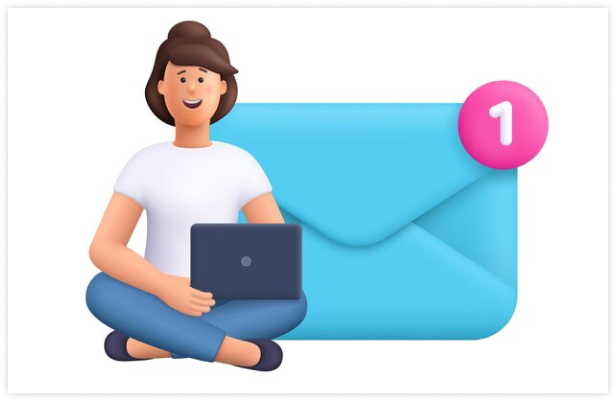
Here’s where things get interesting. If segmentation is about sending the right message to the right group, then personalization is about speaking directly to each individual. It’s the difference between “Hey, you!” and “Hey, Sarah!” Personalization doesn’t just increase conversions it makes customers feel like the email was written for them.
Let’s look at the facts: personalized emails can generate up to 20% more sales than generic blasts
Why? Because personalized emails deliver the exact content, your customer needs at the right time. And it’s not just about slapping their first name in the subject line—though that’s a start.
Here’s what you can do to truly personalize:
- Use names and preferences: Start with the basics—like using the customer’s name in the email body and subject lines. But go further by integrating their browsing behavior, past purchases or even location.
Example: “Sarah, your favorite summer dress is on sale!”
- Behavior-based emails: Automate emails based on customer actions. Did they leave something in their cart? Send a reminder. Did they just buy a product? Send personalized product recommendations that complement their purchase.
Example: “You left something behind! Get 10% off that cozy sweater you almost bought.”
- Anniversary or birthday emails: A little celebration can go a long way. Send birthday or anniversary discounts to make customers feel special and to give them a reason to click.
Example: “Happy birthday, John! Enjoy 20% off your next order!”
But why stop at behavior? You can personalize emails based on location, purchase history or even their preference for communication (email vs text). The more personal the email the more connected the customer feels to your brand
At the end of the day personalization is about building a relationship. And when customers feel valued they’re more likely to convert.
Great Email Subject Lines and CTAs
Let’s face it—before your email can convert anyone, they need to open it. That’s where subject lines come in. It’s often said that the subject line is the make-or-break moment of any email campaign. Why? Because it directly determines whether your email gets opened or ignored. However, once they open it, your call-to-action (CTA) ultimately drives the sale.
Subject Lines: That First Click
You have less than a second to grab someone’s attention in their inbox. Subject lines are your first—and sometimes only—chance to make an impression. And with so many emails in your inbox daily, how do you stand out? Simple: make your subject line irresistible.
Here are a few tricks:
- Personalization: Including the recipient’s name can increase open rates by 26%.
Example: “John, this deal won’t last long!”
- Create urgency: Words like “limited-time,” “now,” or “only today” make customers act fast.
Example: “Last chance to get 20% off—ending tonight!”
- Curiosity works: Ask a question or tease the content inside without giving it all away.
Example: “Are you missing out on this exclusive deal?”
- Test length: Keep your subject line between 40-50 characters for the best balance between clarity and intrigue
- Emojis? Yes, please!: A small visual can make your email stand out in a crowded inbox. Use them wisely though.
Example: “🎉 Big sale inside – grab your favorites!”
But it doesn’t stop there. After you’ve nailed the subject line the next big thing is delivering on your promise within the email. This leads us to the CTA.
Email Call-to-Action that converts
Think of the CTA as your golden ticket. It’s the moment of truth when your customer decides whether to click and convert or close the email. A great CTA is direct, action-oriented, and impossible to ignore.
Here’s what makes a strong CTA:
- Clarity: Be clear about what the recipient should do. Don’t make them guess! Use action verbs like “Buy Now,” “Get 20% Off” or “Shop New Arrivals.”
Example: “Claim Your Offer Now”
- Placement matters: Your CTA should be above the fold so the reader doesn’t have to scroll.
- Create urgency: Just like subject lines, urgency works here. A “limited-time offer” or “only a few left” can give the customer that final nudge.
- Mobile optimization: Make sure your CTA button is big enough to tap on mobile devices
- Keep it focused: The fewer CTAs, the better. Multiple CTAs can confuse the reader and dilute the action you want them to take. Stick to one primary CTA for a clearer path to conversion.
By creating subject lines that grab attention and CTAs that drive immediate action, you’re setting yourself up for higher engagement and, most importantly, higher conversions.
Let me know if you’re ready to move on to Optimizing for Mobile, where we’ll talk about why more than half your sales could come from someone’s phone!
Build trust & FOMO
Highlight real-time activities like reviews, sales & sign-ups.
Optimizing for Mobile: Why It’s Critical for Higher Conversions
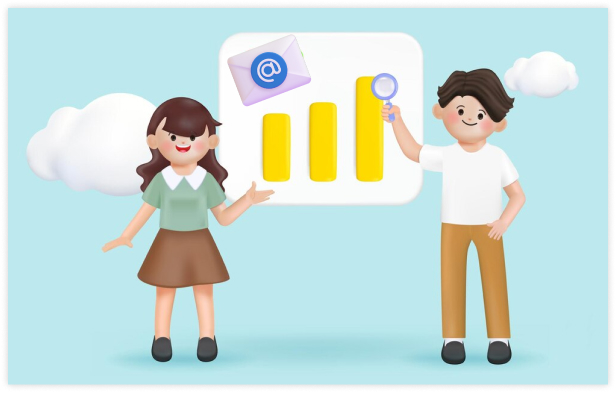
Did you know that 73% of eCommerce sales now happen on mobile devices? So, if your emails aren’t optimized for mobile, you’re losing out—big time. In today’s fast-paced world, people are checking emails on the go. If your message looks off or isn’t easy to interact with on a phone, it’s going to the trash.
Why Mobile Optimization Matters
Think about it: a customer opens your email on their phone. They scroll down, but the text is cramped, the images don’t load, and the CTA is impossible to tap. Are they going to stick around and figure it out? Probably not. That’s why mobile optimization is key to keeping engagement high and conversion rates healthy.
Here’s the thing—a mobile-optimized email means more than just a smaller version of your desktop email. It needs to be responsive and seamless no matter what device the customer is using.
How to Optimize Your Emails for Mobile:
- Responsive design: Your email layout should adjust based on the device, whether it’s a smartphone or a tablet. This means the email should resize and reformat for a clean, easy-to-read experience
- Mobile-friendly fonts: Use larger fonts (at least 14px) that are easy to read without zooming in.
- Touch-friendly CTAs: Make sure your call-to-action buttons are big and easy to tap—44×44 pixels is the minimum recommended size. Don’t make users zoom in to click!
Example: A bold, central “Shop Now” button that’s easy to tap with a thumb.
- Keep it concise: Mobile users are scrolling fast. Cut down on long paragraphs and focus on snappy, bite-sized info.
- Optimize images: Compressed images that load quickly are a must. If images load too slowly, your customers will lose patience and move on.
Why Does This Work?
More than half of your customers will open emails on their mobile devices. They’ll engage if they find an email that’s clear, easy to navigate, and perfectly formatted for mobile. Responsive design improves clickthrough rates by up to 15%, which could significantly boost conversions.
Ultimately, you want your emails to look just as good on a phone as they do on a desktop. So, no matter where or how your customers read your emails, they’ll have a great experience.
Build trust & FOMO
Highlight real-time activities like reviews, sales & sign-ups.
Automating Emails for Maximum Efficiency
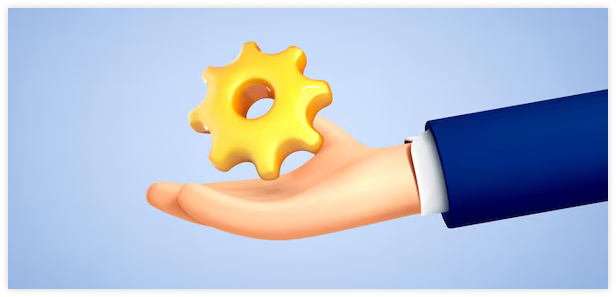
Here’s the big secret to running a successful eCommerce email marketing campaign without losing your mind: automation. Manually sending emails to your entire list? That’s not just inefficient—it’s holding you back from reaching more customers at the right time. Automation not only saves you hours but also ensures that the right message lands in your inbox at the perfect moment. And that’s what gets more conversions.
Why Automate?
Automated emails get up to 70.5% higher open rates and 152% higher click-through rates than standard bulk emails. Why? Because customer behavior triggers them—think of it as the email equivalent of being in the right place at the right time. It ensures you’re sending relevant emails exactly when the customer is ready to engage.
Here’s a key advantage: automation turns one-time actions into long-term revenue generators. Once you set up automated flows, they work on autopilot. Whether it’s a welcome email, cart reminder, or post-purchase follow-up, your customer feels like you’re always paying attention.
Key Automated Email Flows to Boost Conversions
- Welcome Series: A customer just subscribed to your list. What now? An automated welcome series allows you to make a great first impression. With an open rate of up to 63.91% for welcome emails, this is your chance to introduce your brand, share your story, and even offer a discount to nudge them towards a first purchase.
Example: “Welcome to [Brand]! Here’s 10% off your first order—use code WELCOME10.”
- Cart Abandonment Emails: Did you know that 70% of online shopping carts are abandoned before the customer completes their purchase? By automating cart recovery emails, you can remind shoppers to come back and finish their purchase. Even better, you can sweeten the deal by offering a limited-time discount or free shipping.
Example: “You left something behind! Complete your order and get free shipping.”
- Post-purchase follow-up: Don’t stop the relationship after a sale. Set up automated post-purchase emails to thank customers for their purchase, recommend complementary products, or ask for a review. This not only builds trust but also keeps your brand top of mind.
Example: “Thanks for your purchase! Here’s 15% off your next order.”
- Re-engagement Emails: Customers can go cold over time, but automation lets you win them back. A simple “We miss you” email with a special offer can re-engage lapsed customers and bring them back into your sales funnel
Example: “It’s been a while! Here’s 20% off to welcome you back.”
Setting Up Automation the Right Way
Automation is only as good as your strategy. Here are a few tips to get it right:
- Start with behavior triggers: Use customer actions (or inactions) as triggers for your emails—whether that’s subscribing, purchasing or abandoning a cart.
- Personalize your automated emails: Just because it’s automated doesn’t mean it has to feel robotic. Use customer data to add personal touches (like their name or purchase history).
- Test and optimize: Even with automation, it’s important to test your subject lines, CTAs, and content to improve your results continually
Timing & Frequency: Finding the Sweet Spot for Higher Conversions
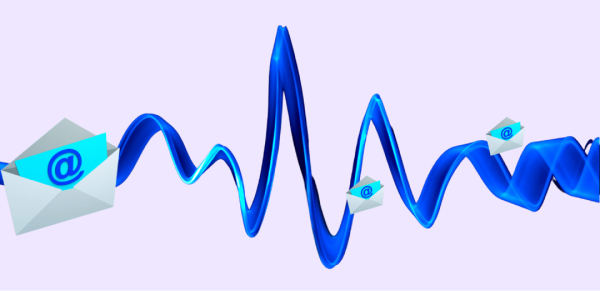
One of the biggest mistakes in email marketing? Sending too many or too few emails. Getting the timing and frequency right can be the difference between emails that convert and emails that get deleted without a second thought.
Why Timing and Frequency Matter
If you send too many emails, your customers will get annoyed and might unsubscribe. If you send too few they could forget about you and you’ll miss out on potential sales. Research shows that finding the right balance can increase open rates, click-through rates and conversions
The tricky part? There’s no one-size-fits-all answer to how often or when you should send your emails. The perfect timing depends on your audience and the type of email you’re sending. But here are some proven strategies to get you started:
How to Find the Best Email Timing
- Test different times: Many studies show Tuesdays and Thursdays are the best days to send emails, but your audience might be different. Try sending emails on different days and times to see when your open and click rates spike.
- Morning vs. evening: Experiment with early morning (6-9 AM) vs. late afternoon (4-6 PM) sends to see when your audience is most active.
- Tip: ECommerce brands often see higher engagement mid-week, but make sure to track and analyse your data to know what works best for you
- Time zones matter: Remember to segment your list by location. What’s a good send time for someone in New York might be too early for someone in Los Angeles. Automate your campaigns to adjust based on time zones.
- Leverage customer behavior: With automation, you can trigger emails at exactly the right moment based on customer behavior. For example, send a cart abandonment email an hour after they leave your site, or a follow-up email the next day.
How Often Should You Send Emails?
Email frequency is tricky but one rule stands out: quality over quantity. You don’t want to overwhelm your customers, but you also don’t want to disappear from their inboxes.
- 1-2 emails per week: Most eCommerce businesses find 1-2 emails the sweet spot. More than that, you risk email fatigue. Less than that and customers might forget about you
- Segment based on engagement: Highly engaged customers can handle more frequent emails—so don’t be afraid to increase frequency for your most loyal segment. Conversely, send fewer emails to customers who haven’t opened one.
- Seasonal spikes: It’s okay to increase frequency during major sales periods like Black Friday or holiday seasons. Just make sure your emails still provide value—nobody wants five generic promotions in a row.
How to Nail Timing & Frequency?
Test, track and adjust. What works for one brand won’t work for another. Test different days, times and frequencies to find your sweet spot. Track open rates, click-through rates, and, most importantly, conversion rates to fine-tune your strategy.
Build trust & FOMO
Highlight real-time activities like reviews, sales & sign-ups.
Seasonal & Promotional Campaigns
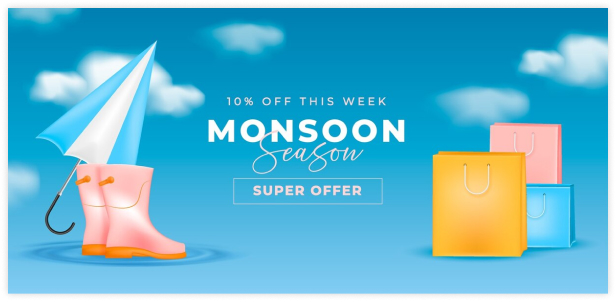
Seasonal and promotional email campaigns are your secret weapon for driving sales when customers are most likely to buy. Whether it’s Black Friday, Christmas, or a special flash sale, timing your emails around key sales events can create urgency and boost conversions. But how do you stand out in a sea of holiday promotions and limited-time offers?
Why Seasonal Campaigns Work
During peak sales periods, customers are already in buying mode. They’re looking for deals and are more likely to open promotional emails than at other times of the year. This is the perfect opportunity to increase your email efforts and convert more subscribers into buyers.
The key here is to prepare ahead of time. Start planning your seasonal campaigns weeks or even months in advance so when the big day arrives you’re ready to send emails that cut through the noise and grab attention.
How to Optimize Your Seasonal Emails
- Tie your emails to the event: Customers are more likely to engage if your promotion feels relevant. Use seasonal themes in your subject lines, email design and offers.
Example: “🎃 Spooky Savings! Get 20% Off This Halloween!”
- Create urgency: Use limited-time offers to drive immediate action. Phrases like “ends tonight” or “last chance” can give customers that final nudge to click and buy
Example: “Cyber Monday Madness—Deals Expire in 24 Hours!”
- Offer exclusive discounts: Give your email subscribers something special, like a discount that’s not available to non-subscribers.
Example: “VIP Access: 30% Off Before Our Black Friday Sale Opens to the Public!”
- Segment for the best results: Don’t send the same holiday promo to your entire list. Use segmentation to target different customer groups. Your loyal customers might get a bigger discount, while lapsed customers receive an offer to win them back.
Example: Loyal customers receive, “You’ve earned this! Get 40% off,” while less engaged customers get, “Come back and save 20% today!”
- Highlight gift guides or best-sellers: Help your customers by showcasing your top-selling products or offering a gift guide that simplifies their buying decisions.
Example: “Holiday Gift Guide: Our Top Picks for the Season.”
- Time Your Campaigns for Maximum Impact
Start your seasonal campaigns early to build momentum. While most brands launch on Black Friday, why not do a “pre-Black Friday” sale to get in first? Customers love to be the first to know; early access can drive big sales before the competition starts.
Make sure to send multiple emails throughout the campaign period. For example, a pre-sale email to build anticipation, a “last chance” email to create urgency, and a final email on the day of the sale.
Build trust & FOMO
Highlight real-time activities like reviews, sales & sign-ups.
Measure, Test, and Optimize
Now that you have crafted your emails, set up automation and run your seasonal campaigns there’s one final step that will make or break your efforts: measuring and optimizing. No matter how good your email campaign looks, testing and tweaking is what leads to continuous improvement and higher and higher conversions.
Why Testing Matters
You can’t improve what you don’t measure. The best email marketers don’t guess they use data to drive every decision. Regular testing of your subject lines, content, images and calls to action will increase your conversion rates and make sure your campaigns are always getting better
But what should you be testing? Let’s break it down.
Metrics to Track
Before you start tweaking you need to know what to measure. Here are the key metrics:
- Open rate: This tells you how many people opened your email. It’s your first clue that your subject line and preheader text are working
- Click-through rate (CTR): This shows how many people clicked on a link in your email. A low CTR means your content or CTA might need work.
- Conversion rate: This is the big one—it tells you how many people actually completed the desired action (purchase, signup etc.) after opening the email
- Bounce rate: If emails are bouncing it could mean you need to clean your list and remove inactive or fake addresses
- Unsubscribe rate: A high unsubscribe rate could mean you’re sending too many emails or your content isn’t hitting the mark.
A/B Testing: How to Do It
A/B testing (also known as split testing) allows you to compare two versions of the same email to see which one performs better. You can test one element at a time—whether it’s the subject line, email layout, CTA or even the send time.
Here’s how to run an A/B test:
- Choose one variable: Pick just one thing to test at a time. For example test two different subject lines or two versions of a CTA button (one with “Buy Now” and the other with “Shop Now”).
- Send to a small segment: Send your two variations to a smaller portion of your list. Once you see which one performs better send the winner to the rest of your subscribers.
- Analyze the results: Look at which one gets higher open rates, click-throughs and conversions
What to Test in Your Emails
- Subject lines: Try different lengths, emojis or approaches (curiosity vs. urgency) to see what gets more opens.
- CTAs: Test the wording and color of your buttons to see what drives more clicks.
- Email layout: Try a single-column layout versus a multi-column one to see which keeps readers engaged.
- Send times: Test if emails sent in the morning perform better than those sent in the afternoon or evening.
- Personalization: Try adding more personal touches—like addressing customers by name or offering product recommendations based on past purchases—and see what affects conversions
Keep Testing
The beauty of email marketing is you can always improve. With every A/B test you’re getting closer to understanding what makes your customers click. Use the data to optimize your strategy continuously.
By tracking these metrics and running regular tests, you’ll learn what works for your audience, fine-tune your email marketing strategy, and keep conversion rates rising.
Conclusion
Optimizing your eCommerce email marketing for higher conversions isn’t just about sending emails—it’s about sending the right emails to the right people at the right time. By using segmentation, personalization, automation, testing, and optimization, you can turn your email marketing into a conversion machine.
Here’s a summary:
- Segment your audience to target better.
- Personalize with offers based on behavior and demographics.
- Write subject lines that grab attention and CTAs that drive action.
- Optimize for mobile so your emails look good and work on any device.
- Automate welcome series and cart abandonment reminders.
- Get the timing and frequency right so you’re not spamming your customers.
- Use seasonal campaigns to ride the sales waves.
- Measure, test and optimize to improve your email performance.
These will help with higher engagement, more clicks, and more sales.








